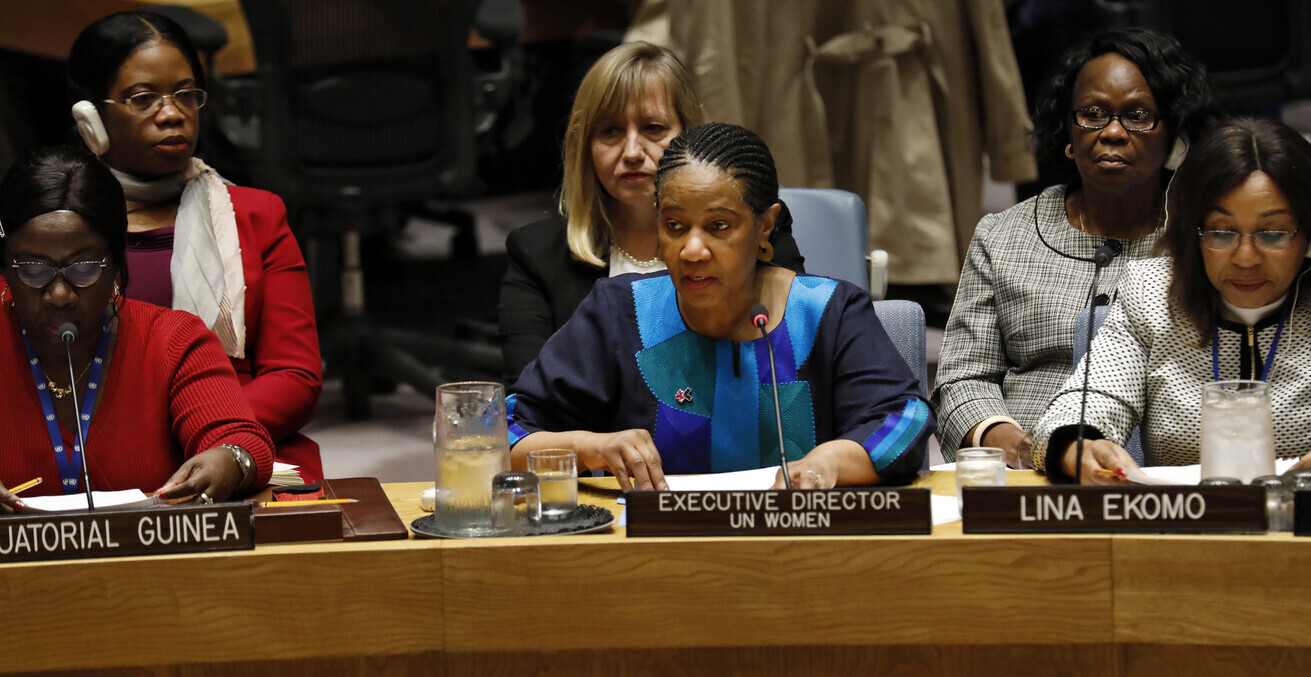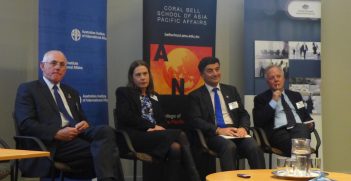From Victims to Activists: Women’s Engagement and Participation in P/CVE

For a long time, women were invisible in the policy responses to political violence and terrorism. Although the introduction of Preventing and Countering Violent Extremism (P/CVE) has helped improve the representation of women, there is still a long way to go.
When over 70 Australian women travelled to live under Islamic State (IS) rule in Syria in the mid-2010s, the media reported shock and outrage. As seen most recently in the coverage of Zehra Duman, every time attention is paid to “jihadi brides” or female returnees, the undercurrent of the discussion remains the same: women are not supposed to be violent.
Similarly, in the coverage of terrorist incidents, it is often assumed that terrorists are male, without acknowledging the relationship between masculinity and radicalisation. This assumption has led to confusion regarding an increasing number of terrorist attacks, mainly in North America and Europe, which have been associated with the online community of incels (involuntary celibates), whose ideology centres around violent antifeminist notions of masculinity and gender hierarchy. As this awareness of gender in violent extremism has grown, so too has the interest of policymakers and practitioners in including women and gender perspectives in efforts to counter terrorism and prevent and counter violent extremism (P/CVE).
Challenging such assumptions about gendered identities and behaviour is part of a gender perspective on P/CVE, which has slowly fostered awareness of the significance of gender in the context of political violence. Early political responses to terrorism and violent extremism have tended to portray women as peaceful actors who participate in P/CVE efforts through their maternal roles as the daughters, wives, sisters, and mothers of radicalised males. For instance, in some P/CVE programs women were engaged in activities to identify and deradicalise their male relatives. These programs failed to recognise women’s capabilities to plan and perpetrate extremist violence. Taking gender seriously means that governments have been encouraged to recognise women’s agency, not only as “jihadi brides” from Australia and globally, but also as recruiters of extremist organisations and perpetrators of violence.
Moreover, the increased integration of United Nations agencies, such as the United Nations Development Programme (UNDP) and UN Women, and civil society organisations into the realm of counterterrorism has meant that representations of women as victims and perpetrators have been complemented by ideas about women as particularly suitable community organisers and activists for P/CVE. Embedded in a long history of development discourses, women are often considered as particularly responsible, entrepreneurial, and embedded in their communities, thereby positioning them as “untapped resources” capable of increasing community coherence and resilience to violent extremism.
The adoption of global resolutions such as the United Nations Security Council Resolution (UNSCR) 2242 and UNSCR 2395 has encouraged global recognition of women’s capabilities as counterterrorism agents and their role in peace and security governance. These changes have influenced recent P/CVE efforts — particularly at the national level — with countries such as Australia proposing initiatives to develop the capacity of women, both domestically and within regional “focused states,” to act as P/CVE actors and to create opportunities to engage them within processes to design, develop, and implement P/CVE initiatives.
Does this recent inclusion of more nuanced understandings of women and womanhood mean that P/CVE practices have turned the curve? Can they meaningfully contribute towards the ambitious goal of the global Women, Peace and Security Agenda to ensure “the radical reconfiguration of the gendered power dynamics that characterise our world and a properly global commitment to sustainable and positive peace”?
Despite this development, the involvement of women remains limited within P/CVE activities, as gendered stereotypes still inform these processes. Although political institutions propose to empower women by developing their skills to engage in P/CVE activities, states do not perceive this as a requirement for men, who are viewed as inherently effective P/CVE actors. As gender stereotypes also inform women’s engagement, states tend to engage women at the local or community level. However, opportunities for meaningful engagement at the national and global levels are limited. These factors and the selective involvement of women from high social classes who do not experience the same levels of marginalisation and extremist violence as women of lower social status, further create barriers to the full and meaningful engagement of women.
Although recent developments have opened new opportunities, they have also placed a tremendous burden on women to fulfil a multitude of roles. Greater responsibilities are being placed on women and women-led organisations to advance their engagement within the P/CVE space, despite the emotional labour and limited access to funding.
At the same time, while we celebrate International Women’s Day, it is also important to raise awareness for the need to go beyond the binary of women and men and the adoption of gender perspectives. This focus on the male/female binary not only excludes the realities of many people who do not fit in these categories, but also frequently obscures how ideas of masculinity, cis-heteronormativity, and white supremacy are defining policies and perpetuating exclusionary structures.
There is still not enough engagement with how these structures shape and influence not only societies that are affected by terrorism and violent extremism, but also the very institutions that aim to prevent and counter it. This problem is not simply addressed by increasing the number of women in UN and national offices. It requires deep and intersectional engagement with how gendered, racialised, and patriarchal structures define “terrorism,” “counterterrorism,” “radicalisation,” and “P/CVE” and how they inform practices and policymaking.
Thus, while we have come a long way toward a less instrumentalised and more meaningful understanding of the role of women in violent extremism and P/CVE, there is still an equally long and possibly more painful way to go to change the male and white supremacist structures that underlie both violent extremism and P/CVE.
Ann-Kathrin Rothermel (she/her) @ARed_belka (Twitter) is a research associate at the University of Potsdam in Germany and a research fellow with the Institute for Research on Male Supremacism. Her research focuses on the role of gender in online radicalization and the UN’s global counterterrorism agenda.
Doris Asante (she/her) @asante_doris (Twitter) is a PhD candidate in Government and International Relations at the University of Sydney. Her research explores the relationship between CSOs and states in the national implementation of UNSCR 2242.
This article is published under a Creative Commons License and may be republished with attribution.





